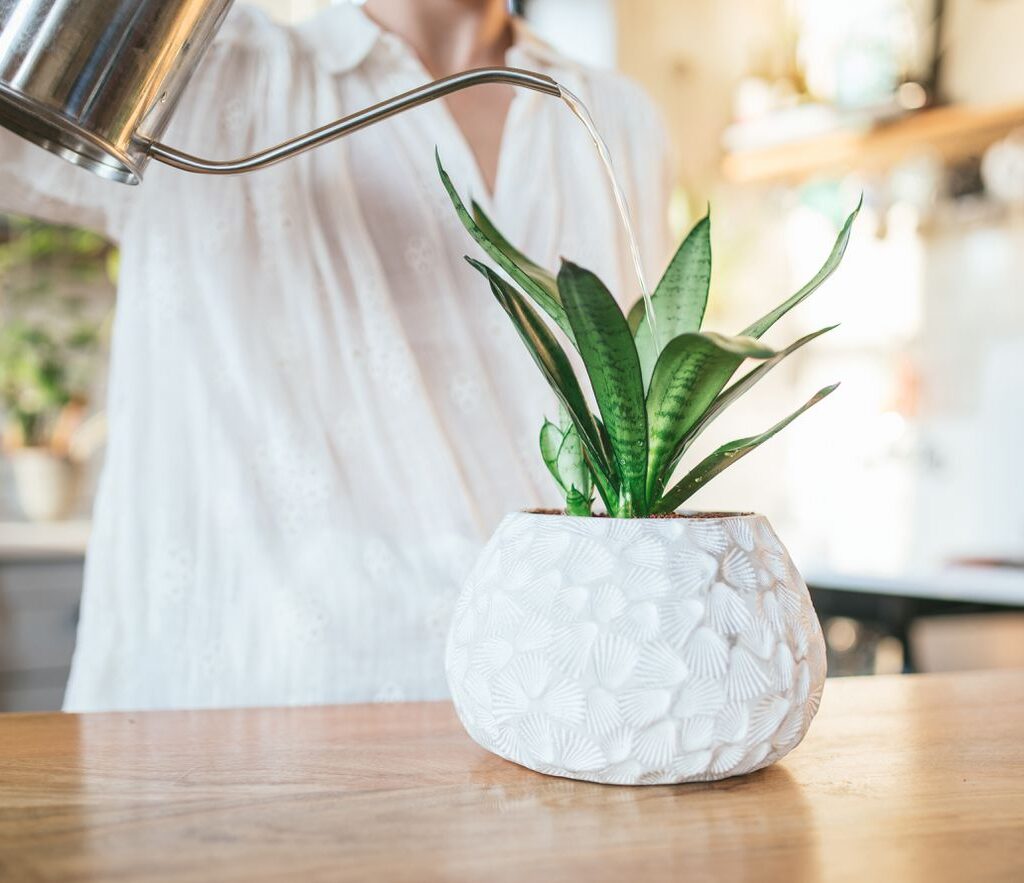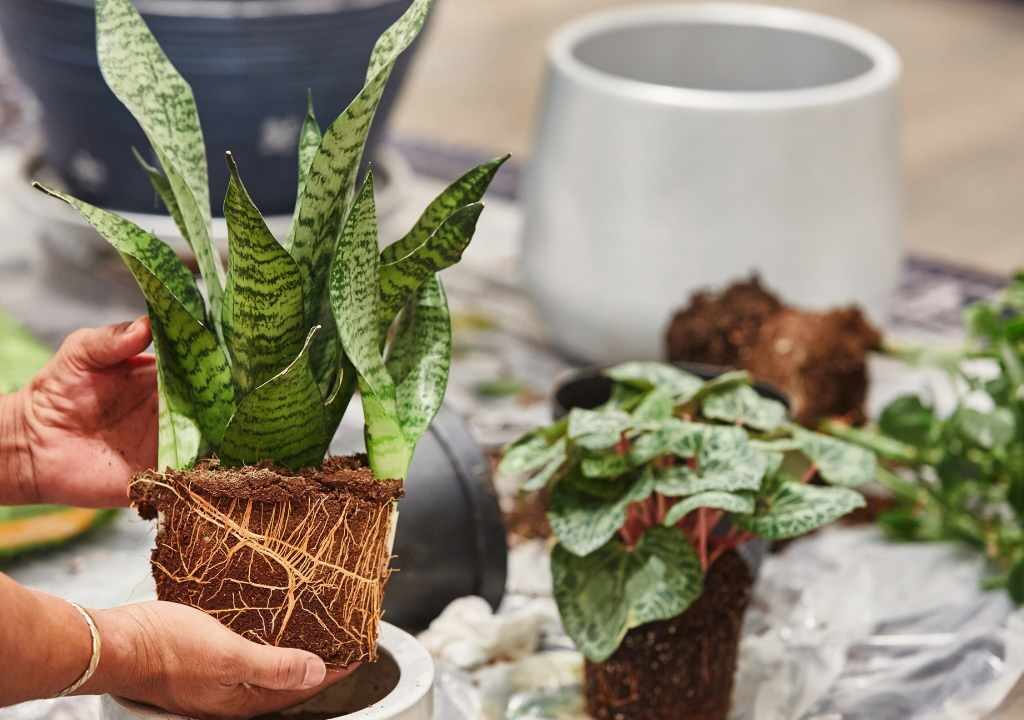Snake plants (Sansevieria spp.), also known as mother-in-law’s tongue or viper’s bowstring hemp, are among the most popular and resilient houseplants worldwide. Beloved for their sleek, upright foliage, ease of care, and remarkable air-purifying abilities, snake plants have become a staple in modern interior decor. They not only enhance aesthetics but also contribute to a healthier indoor environment by removing toxins such as formaldehyde, benzene, and xylene from the air.
Indoor cultivation of snake plants is ideal for beginners and experienced gardeners alike, as these plants thrive in low-maintenance conditions while requiring minimal attention. This guide provides a complete overview of caring for snake plants indoors, including lighting, watering, soil requirements, propagation, pest management, and general maintenance.
Why Snake Plants Are Ideal for Indoor Spaces

Snake plants are uniquely suited for indoor environments due to several characteristics:
- Low Maintenance: Can survive neglect, low light, and irregular watering.
- Air Purification: Proven to filter indoor toxins, improving air quality.
- Adaptable to Lighting Conditions: Tolerates low, medium, and bright indirect light.
- Decorative Appeal: Upright, sword-shaped leaves and variegated patterns suit modern and traditional interiors.
- Durability: Resistant to most pests and diseases, making them excellent for busy households.
Choosing the Right Snake Plant Variety
There are numerous snake plant varieties, each with distinct foliage patterns and sizes:

- Sansevieria trifasciata ‘Laurentii’: Classic variety with yellow-edged leaves.
- Sansevieria trifasciata ‘Moonshine’: Silvery-green leaves, popular for modern decor.
- Sansevieria trifasciata ‘Hahnii’: Compact, bird’s nest form suitable for tabletops and shelves.
- Sansevieria cylindrica: Cylindrical, fan-shaped leaves with unique architectural appeal.
- Sansevieria trifasciata ‘Black Gold’: Dark green leaves with golden margins, striking visual contrast.
Selecting a variety depends on available space, decorative preference, and growth habit. Compact varieties are ideal for small apartments, while larger types make bold statement pieces in living areas or offices.
Lighting Requirements
Snake plants are highly adaptable to indoor lighting:
- Bright, Indirect Light: Ideal for vigorous growth and robust coloration.
- Moderate Light: Most common indoor locations like offices or living rooms are sufficient.
- Low Light: Snake plants tolerate shaded corners, though growth may slow.
- Avoid Direct Sun: Prolonged direct sunlight can scorch leaves.
Rotating the plant occasionally ensures even growth and prevents leaning toward the light source.
Soil and Container Requirements

Snake plants prefer well-draining soil to prevent root rot:
- Soil Type: Use cactus or succulent mix, or prepare a mix of potting soil, sand, and perlite in equal parts.
- Container:
- Must have drainage holes.
- Terracotta pots are excellent for moisture control.
- Size: Choose a pot 2–4 inches larger than the root ball; snake plants prefer slightly snug containers.
A suitable container with proper soil ensures aeration, prevents water accumulation, and promotes healthy root development.
Watering Guidelines
Snake plants are drought-tolerant and require careful watering practices:
- Frequency: Water once every 2–4 weeks, depending on indoor temperature and humidity.
- Check Soil Moisture: Allow the top 2–3 inches of soil to dry completely between waterings.
- Avoid Overwatering: Too much water leads to root rot, yellowing leaves, and mushy stems.
- Winter Care: Reduce watering during dormant months.
Tip: Water at the base of the plant rather than over the leaves to avoid fungal issues.
Temperature and Humidity
- Ideal Temperature: 18–27°C (65–80°F).
- Tolerance Range: Can survive 10–35°C (50–95°F) but may grow slowly outside optimal conditions.
- Humidity: Average indoor humidity is sufficient; snake plants do not require high humidity.
Avoid placing the plant near air conditioners or heaters, as sudden temperature fluctuations can stress it.
Fertilization Practices
While snake plants are low-maintenance, occasional fertilization encourages growth:
- Fertilizer Type: Use a balanced, water-soluble fertilizer diluted to half strength.
- Frequency: Every 6–8 weeks during the growing season (spring and summer).
- Winter Care: Avoid fertilization during dormant months to prevent over-fertilization.
Excess fertilizer may cause leaf burn or salt buildup in the soil, so moderation is key.
Propagation Techniques
Snake plants are easily propagated, making them ideal for sharing or expanding indoor greenery:
- Leaf Cuttings:
- Cut a healthy leaf into 2–3 inch sections.
- Let the cut ends dry for 1–2 days.
- Plant in well-draining soil; roots develop in a few weeks.
- Division:
- Remove the plant from its container.
- Separate root clusters carefully.
- Replant divisions in fresh soil.
- Water Propagation:
- Place cuttings in water until roots develop.
- Transfer to soil once roots are 1–2 inches long.
Propagation is simple and reliable, making snake plants a sustainable and renewable indoor plant choice.
Pruning and Maintenance
Pruning maintains plant health and aesthetics:
- Remove Damaged Leaves: Cut yellow, brown, or diseased leaves at the base.
- Control Size: Trim tall leaves to maintain shape and fit your space.
- Cleaning Leaves: Wipe leaves with a damp cloth to remove dust and enhance photosynthesis.
Regular pruning encourages vigorous growth and ensures the plant remains visually appealing.
Pest and Disease Management
Snake plants are resilient but may occasionally face minor issues:

- Common Pests: Mealybugs, spider mites, and scale insects.
- Treat with neem oil, insecticidal soap, or wipe affected areas manually.
- Diseases: Root rot from overwatering; fungal leaf spots are rare.
- Use well-draining soil, avoid waterlogging, and remove affected leaves.
Routine inspection helps prevent infestations and maintains a healthy plant.
Benefits of Snake Plants Indoors
- Air Purification: Removes formaldehyde, benzene, and other toxins, improving indoor air quality.
- Low Maintenance: Thrives with minimal care, ideal for busy lifestyles.
- Aesthetic Value: Architectural foliage adds elegance to homes, offices, and commercial spaces.
- Stress Reduction: Indoor greenery enhances mood, reduces stress, and promotes relaxation.
- Improved Sleep: Releases oxygen at night, contributing to better indoor air quality for bedrooms.
Tips for Optimal Indoor Growth
- Rotate plants occasionally for uniform growth.
- Avoid overcrowding pots to prevent competition for nutrients.
- Use well-draining soil and pots with drainage holes.
- Place near indirect sunlight; avoid harsh midday sun.
- Fertilize sparingly during the growing season.
Conclusion
Snake plants are among the most versatile, resilient, and beneficial indoor plants. Their minimal care requirements, air-purifying abilities, and striking appearance make them ideal for urban homes, offices, and indoor spaces of all sizes.
By selecting the right variety, providing suitable soil, managing watering and light, and implementing simple maintenance practices, snake plants can thrive indoors year-round. Propagation is straightforward, allowing gardeners to expand their plant collection easily.
Whether you are a beginner seeking a low-maintenance houseplant or an experienced indoor gardener looking to enhance air quality and aesthetics, snake plants offer a perfect combination of beauty, health benefits, and resilience. With proper care, these elegant plants will continue to grow, purify the air, and bring greenery and tranquility to your indoor environment for many years.






Leave A Comment